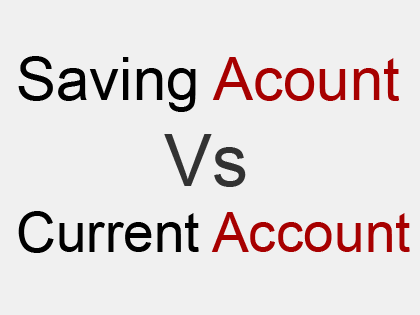Current Account Vs. Savings Account – Comparing Essentials and Documents

If you’ve ever walked into a bank and felt confused by the types of accounts offered, you’re not alone. One of the most confounding choices is deciding between a current account vs savings account. Each type suits different needs, and picking the wrong one can result in missed opportunities for growth or ease of financial transactions. This blog aims to dispel your uncertainties by comparing these two types of accounts regarding their essentials and the documents required for opening them. By the end, you’ll understand the difference and know which one best suits your needs. Additionally, familiarizing yourself with terms like ERP full form can provide insights into how modern technologies streamline business operations and financial management, complementing your understanding of banking services.
Essentials: The Basic Differences
The first question to tackle is, what fundamentally sets a current account apart from a savings account? Understanding this is crucial because each type of account caters to different needs and situations.
- Purpose: A savings account is primarily for individuals who want to save money and earn interest. In contrast, a current account is designed for frequent transactions like receiving and making payments.
- Interest Rates: Savings accounts offer interest rates on the balance maintained, while current accounts typically do not.
- Transaction Limits: A current account allows for unlimited transactions. Savings accounts usually have a transaction limit or charge fees for excessive transactions.
- Minimum Balance: A current account often demands a higher minimum balance than a savings account.
Documents Required: No Room for Error
One of the essential steps to opening any bank account is the documentation process. Understanding the documents required for a current account and savings account is essential.
- Identification Proof: For a savings account, standard ID proof like Aadhar, PAN, or passport is sufficient. A current account requires these, along with business identification documents.
- Address Proof: Both account types require address proof, such as utility bills or a rental agreement.
- Business Documents: Current accounts require additional paperwork like a business licence, partnership agreement, or GST identification number.
Consider your CIBIL Score
Your CIBIL score may influence the type of account you can open. A good score could be especially beneficial when opening a current account for business purposes. Banks might offer additional perks like higher withdrawal limits or lower minimum balance requirements.
The Flexibility of Hybrid Accounts
Some banks offer accounts that combine the features of both savings and current accounts. These are usually targeted at entrepreneurs and freelancers who require the flexibility of both types of accounts. With these, you could earn interest like a savings account while enjoying the unlimited transactions typical of a current account.
Overdraft Facility: A Unique Feature
The overdraft facility is a significant differentiator between the two accounts. Current accounts often offer overdraft facilities. This feature is particularly useful for businesses to manage cash flow gaps. On the other hand, the savings account does not provide this facility, restricting withdrawals to the available balance only.
Tax Implications: Know the Differences
Savings accounts usually have tax benefits on the interest earned up to a certain limit under Section 80TTA of the Income Tax Act (old regime). However, the interest earned on a current account, if any, is taxable as per the applicable tax slab.
Minimum Balance Requirement: A Crucial Factor
The minimum balance requirement is another critical difference when comparing a current account vs savings account. Savings accounts usually have a lower minimum balance requirement, making them accessible to the general public. On the other hand, current accounts often necessitate a higher minimum balance, given the volume and frequency of business transactions. You can, of course, choose zero-balance accounts and work around this issue. It is essential to be aware of these requirements to avoid unexpected charges.
Digital Banking Features
Both savings and current accounts offer digital banking features, but the difference lies in the extent of services provided. Current accounts usually come with more comprehensive digital banking services, such as bulk payments, payroll management, and customised reports, catering to the needs of a business. In contrast, savings accounts offer basic online services like fund transfers, bill payments, and account statements.
Conclusion
The choice between a current account vs savings account is not one-size-fits-all. It’s tailored to your financial habits, transaction frequency, and even your stage in life. As for the documents required for current account or savings account, proper research and preparation can make the process hassle-free. Whichever you choose, ensure it aligns with your financial goals and needs.



